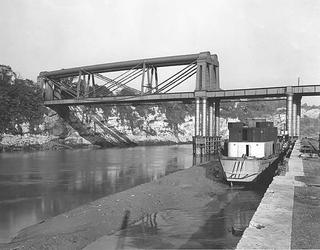
Boundary plate from Dundalk Newry & Greenore Railway
- Made:
- 1873-1950 in unknown place
Boundary plate, Dundalk, Newry & Greenore Railway, cast iron, elliptical, inscribed "D N & G Rly Boundary".
Dundalk, Newry & Greenore Railway cast iron boundary plate.
Boundary markers like this were used to clearly identify the limits of railway land and to distinguish them from adjacent property.
The Dundalk, Newry & Greenore Railway was built between 1873 and 1876. The 26-mile (42 km) line connected Dundalk and Newry with the port at Greenore and with ferry services across the Irish Sea to Holyhead on Anglesey (Ynys Môn) in north Wales. Although an Irish railway, it was wholly owned by the London & North Western Railway, as until 1921 Ireland formed part of the United Kingdom. The track was built to the Irish gauge of 5 ft 3 ins (1600mm).
When Ireland was partitioned in 1921, the line straddled either side of the international border between the Irish Free State and Northern Ireland, but was operated by the LNWR’s successor, the London, Midland & Scottish Railway. In 1933 it was taken over by the Great Northern Railway (Ireland). It closed on the last day of 1951.
The boundary marker is a simple elliptical cast iron plate, possibly made in the foundry at the London & North Western Railway’s Crewe works or at a railway workshops in Ireland. It was designed to be fixed to a building or structures such as bridges. It has two holes for bolts at either side. The inscription on the front explains its function and reads "D N & G Rly Boundary". It dates from at some point between 1873 and 1950.
Details
- Category:
- Railway Infrastructure
- Object Number:
- 1999-7488
- Materials:
- cast iron
- type:
- boundary plate
- credit:
- British Rail, Clapham




